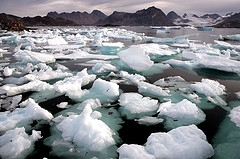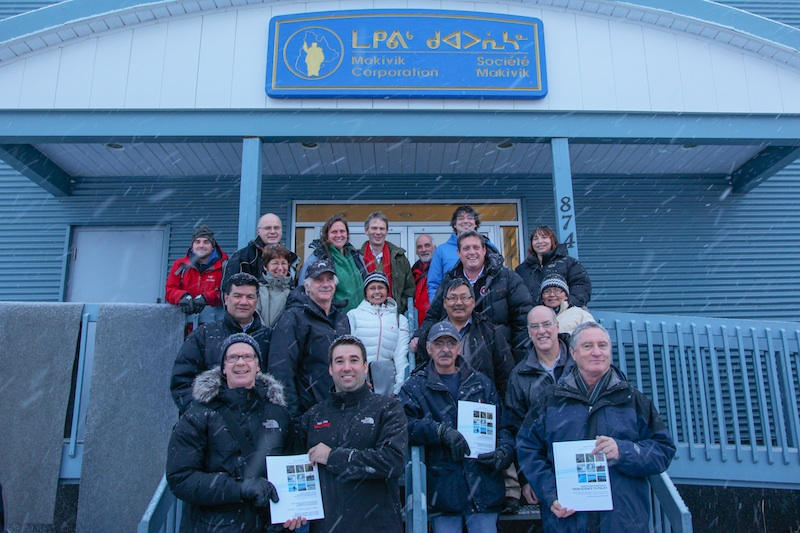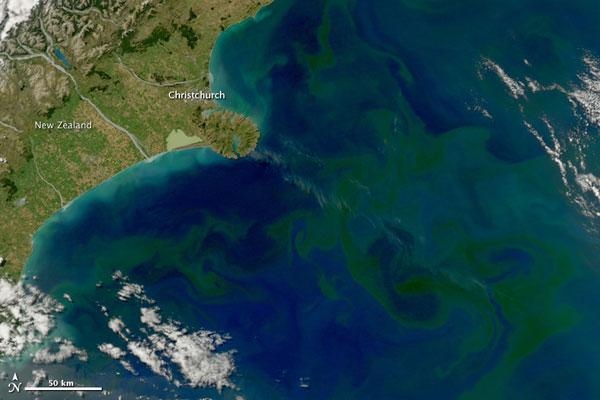
Canada Needs to be a Leader in Arctic Research
Groundbreaking research by Matthew Asplin, a PhD candidate at the University of Manitoba’s Centre for Earth Observation Science, explores the relationship between weather patterns and loss of sea ice.
Called the Beaufort High, a high-pressure system known as an anticyclone hovers over the Beaufort Sea and Canadian Archipelago during the winter and spring seasons. It sounds like a phenomenon of the North, but is one of the many weather patterns that regulates the sea ice cover. Matthew Asplin is studying how the loss of sea ice can affect weather patterns.
“A seasonally ice-free Arctic Ocean investigating these adverse affects and how the loss of sea ice and increasing areas of open water in the Arctic Ocean will then feed back upon weather patterns, could significantly increase the strength of Arctic storms, particularly in the autumn,” he explained. “The reason for this is simple: a seasonally ice-free Arctic ocean is likely to be characterized by a delayed freeze-up during winter, thus maintaining a relatively warm and moist air mass over a region that was previously covered by sea ice. As the influence of the sun decreases with the onset of winter, bitterly cold Arctic air masses will develop over Siberia, Greenland, and the Canadian Archipelago, and collide with the relatively warm and moist air over the Arctic Ocean, creating storms with high winds, and increased snowfall.”
According to the National Snow and Ice Data Center, rising temperatures are causing an increase in the rate of snow and sea ice melting. This increases solar absorption, as there is less of an area to reflect the sun’s energy. The cyclical pattern continues and creates a feedback loop that can also reverse the process. When there is a cooler climate, less snow and ice melt during the summer, which causes more cooling as solar radiation is reflected instead of absorbed.
“Freshly fallen snow is considered to be a very good insulator as the space between the snow grains hinders the transfer of heat,” added Asplin. “Increased autumn snowfalls may therefore hinder the growth of winter sea ice. The opposite effect is observed during the spring and summer where a layer of fresh snow can reflect more energy from the sun back to space, thus slowing the rate of melt.”
The process likely means the atmospheric circulation patterns in the Arctic, as well as the Northern Hemisphere will be impacted.
“There are obviously some serious implications of reduced summer sea ice cover on storm forcing of the remaining sea ice cover, as well as wave erosion along coastlines,” he added. “This is a serious concern, and an important area of research needed immediately.”
Asplin’s passion for weather and climate research started early in childhood in Port Moody B.C., where he spent many summer days on family boating excursions. He attended Simon Fraser University, taking climatology courses, which led him to continue graduate studies in the field of synoptic climatology, or the study of regional-scale atmospheric circulation patterns. After obtaining a Masters in Science at the University of British Columbia in 2006, he moved to Winnipeg to join his wife who had just entered medical school at the University of Manitoba, and met Dr. David Barber at the University of Manitoba’s Centre for Earth Observation Science (CEOS).
As a student working in the newly launched Canada Excellence Research Chair (CERC) program under Dr. Søren Rysgaard, Asplin has contributed innovative research to his field, marking Canada as a leader in Arctic studies. In 2009, Asplin experienced a once-in-a-lifetime event directly related to his research. His fieldwork in the Western Beaufort Sea was targeting old, thick ice floes.
“When we commenced transiting northward into ice that had been classified as “old” ice by the Canadian Ice Service, we were surprised to find that much of it was in fact, heavily decayed first-year ice, interspersed with some very small fragments of old ice,” he explained. “Since we failed to find old, thick ice by transiting northward, we decided to turn the ship east and head towards Banks Island, where thick, old multi-year ice circulates down along the coast from the North. Sure enough, we found some large older ice floes… but when we approached a rather large one to which we wanted to moor the ship, it started to break up in front of our eyes!”
This was caused by long ocean waves (known as swell) that spread through the sea ice. While only up to one metre high, the almost 300 metre wide waves began to fracture as the ice floes rose up over the ocean swell. As they came down the other side of the crest, they simply split open.
“Post-analysis of the event revealed that it was in fact wave packets dispatched by Arctic storms that had moved over large expanses of open water in the Chukchi and East Siberian Seas,” he added. “Since the longest wave lengths travel the fastest, we were in the right place at the right time to observe this. The implications for sea ice melt are huge. Think of it like crumbling a sugar cube in your coffee – more surface area means more efficient transfer of heat to melting.” As the CERC program at the University prepares to support the work of students like Asplin, including constructing a new addition to the CEOS building with more laboratories and offices, there are high expectations for the future of Arctic research from Canada. Asplin said he sought the help of Dr. Rysgaard for a manuscript documenting the ice fracturing in the event above, which he reviewed for publication. The research of Rysgaard with, amongst other things, focus on how this reduction in sea ice type and transformation from multiyear ice types to first-year ice types will affect the ability of the Arctic Ocean to capture and store excess carbon dioxide.
“As the CERC program pulls into full swing, I would expect that I’ll be given more opportunities to study stormforcing of sea ice in other parts of the Northern Hemisphere, particularly along the western and eastern coasts of Greenland,” he said. “I am also curious as to whether changing storm and sea ice climatology will impact Arctic geomicrobiology. I expect I will learn more about this as my career progresses.”
Asplin said he is also interested in CEOS work onboard the CCGS Amundsen where atmospheric scientists, oceanographers, biologists and others come together to collect their field data. Last year, he had the opportunity to visit a large fragment of the Petermann Ice Island while on the vessel.
“I am always seeing interdisciplinary connections with my work to others, and I would certainly like to pursue research that examines how changing sea ice cover and storm climatology would impact other aspects of the Arctic climate system,” he added. “Weather impacts all in Arctic system science.”
To take his research to the next level, funding becomes an issue. Support from the Canadian government and other sources for Arctic observation programs need to be long-term commitments to fuel innovative research to protect our North and its very livelihood. Through achieving a better understanding of how storm-forcing of a declining sea ice cover will impact Northern peoples and politics, Asplin noted regulations and protective legislation in the remote area need to be addressed.
“It is important that Canada emerges as a world leader in developing reliable weather and sea ice prediction tools, as well as comprehensive and rational environmental guidelines because it is clear that there is great international interest on our waterways and northern resources,” he said. “This is our opportunity to forge a reputation as a world leader in Arctic systems science, ecosystem management, and socioeconomic development and preservation.”














